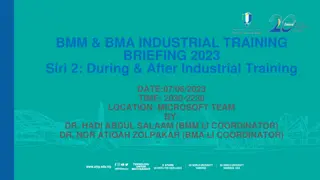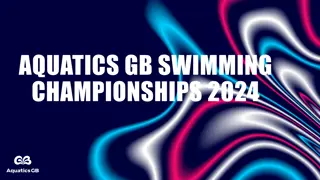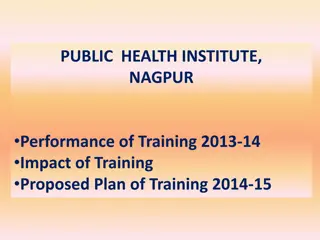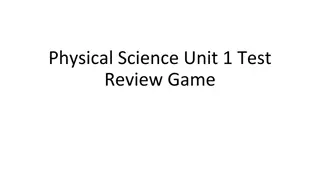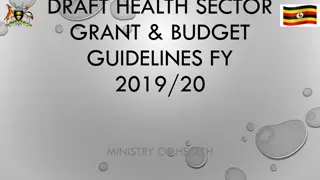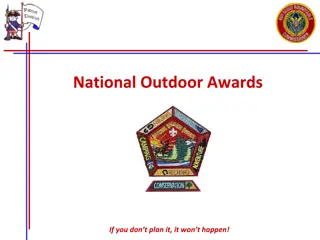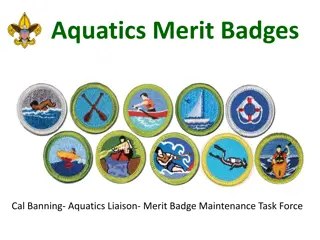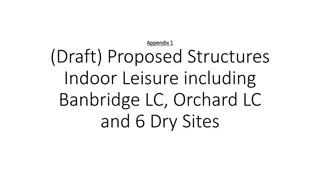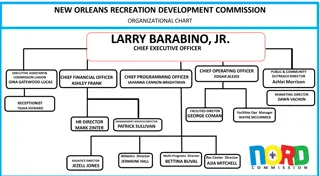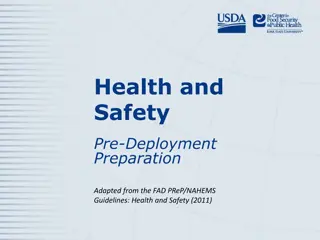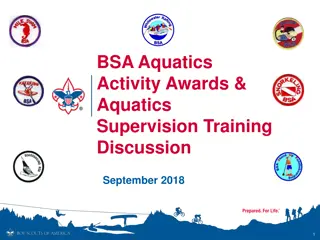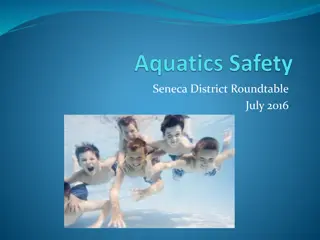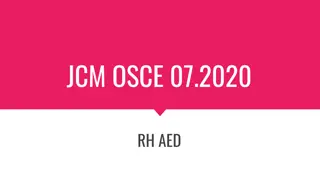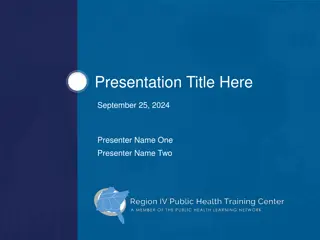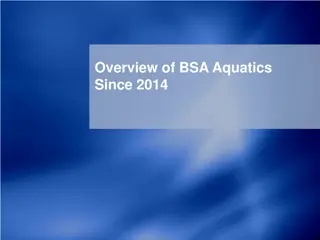Lifeguard Training and Aquatics Health Guidelines
Lifeguard training is essential for ensuring water safety at day and resident camps. This includes minimum staff training durations, aquatics health codes, and guidelines for handling water-related incidents. Emphasizing the importance of qualified lifeguards, proper equipment, and rescue procedures is crucial for maintaining a safe aquatic environment. Additionally, staying updated on waterborne disease outbreaks and following regulatory standards, such as the FDA Model Food Code, is vital for preventing incidents and ensuring compliance with health and safety protocols.
Download Presentation

Please find below an Image/Link to download the presentation.
The content on the website is provided AS IS for your information and personal use only. It may not be sold, licensed, or shared on other websites without obtaining consent from the author.If you encounter any issues during the download, it is possible that the publisher has removed the file from their server.
You are allowed to download the files provided on this website for personal or commercial use, subject to the condition that they are used lawfully. All files are the property of their respective owners.
The content on the website is provided AS IS for your information and personal use only. It may not be sold, licensed, or shared on other websites without obtaining consent from the author.
E N D
Presentation Transcript
Minimum staff training duration: Day camp = 8 hrs Resident camp = 28 hrs Mostly campwide Mostly area specific
Minimum staff training duration: Day camp = 8 hrs Resident camp = 28 hrs campwide area specific balanced
RWI outbreaks Easy for resource limited states to stay up to date Uniform across state lines Similar concept as FDA Model Food Code
2) The QUALIFED LIFEGUARD is able to reach the furthest extent of the assigned zone of PATRON surveillance within 20 seconds. 6.3.3.1.1
rescue tube on person identifying uniform signal device polarized sunglasses PPE UV protection
communication system chairs/stands first aid kit backboard w/ restraints blood spill kit AED/O2 not required
Current lifeguard certification by approved agency Current CPR at professional level
Demonstrate skills & knowledge of: water rescue skills EAPs (drowning, injury, weather, chemicals) Fecal, vomit, & blood contamination procedures Staffing plans, zones, & rotations.
safety plan (EAPs) lifeguard certifications pre-service training in-service training incidents 3 years
required for 2 or more lifeguards specific training requirements minimum 3 months lifeguard experience
Aquatics director is 21 years of age or older and holds a current certificate of training as a BSA Aquatics Instructor from a National Camping School. The aquatics director also is currently certified as a BSA Lifeguard, American Red Cross Lifeguard, or equivalent training recognized by state legislation or regulation (a valid lifeguard certification ), and is currently trained in American Red Cross First Aid and CPR/AED for Professional Rescuers and Health Care Providers, or equivalent.
Pre-Requisites for Aquatics Section Enrollment Be 18 years of age or older. Present evidence of a current lifeguard certification Present evidence of Safe Swim Defense and Safety Afloat training. Be able to complete the 100 yard BSA swimmers test. Immediately after completion of the swimmers test, swim continuously for an additional 450 yards. Immediately after completion of the 450 yard swim, tread water for two minutes. Starting in the water, swim 20 yards using a front crawl or breaststroke, surface dive 7 to 10 feet, retrieve a 10-pound object, surface, swim with the object 20 yards back to the starting point, and exit the water within one minute and 40 seconds.


